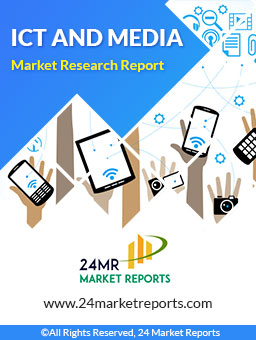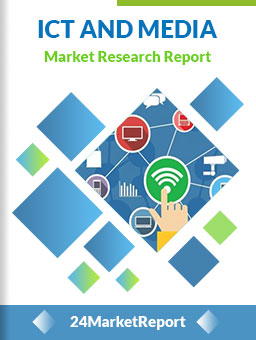
Download FREE Report Sample
Download Free sampleMARKET INSIGHTS
Global gamification learning management system market size was valued at USD 468 million in 2024. The market is projected to grow from USD 506 million in 2025 to USD 797 million by 2032, exhibiting a CAGR of 8.1% during the forecast period.
Gamification learning management systems (GLMS) are digital education platforms that integrate game mechanics like points, badges, and leaderboards into traditional learning processes. These systems enhance user engagement and knowledge retention by applying behavioral psychology principles through interactive challenges and rewards structures. GLMS solutions typically include features like progress tracking, social learning components, and adaptive content delivery mechanisms.
The market growth is driven by increasing adoption of digital learning platforms across corporate and academic sectors, with 89% of employees reporting higher engagement with gamified training programs according to recent studies. While North America currently holds the largest market share at 42%, Asia-Pacific is emerging as the fastest-growing region due to rapid digital transformation in education. Key industry players are focusing on AI integration and mobile optimization to capitalize on the growing demand for personalized, on-the-go learning experiences.
Rapid Digital Transformation in Education Accelerates GLMS Adoption
The global shift toward digital learning platforms has been a key growth driver for Gamification Learning Management Systems. With over 90% of educational institutions now utilizing some form of digital learning tools, the demand for engaging solutions like GLMS has skyrocketed. The COVID-19 pandemic served as a significant catalyst, with corporate training departments increasing their e-learning budgets by an average of 30-40% since 2020. GLMS platforms uniquely address the engagement gap in virtual learning environments through interactive elements that traditional LMS platforms lack.
Corporate Sector Investments in Employee Upskilling Fuel Market Expansion
To know more about market statistics, Download a FREE Sample copy
Corporate training programs are increasingly adopting GLMS solutions to combat low engagement rates in mandatory compliance and skills training. Studies show that gamified learning platforms can improve knowledge retention by up to 40% compared to conventional methods. Major corporations, particularly in technology and financial services sectors, are allocating significant portions of their L&D budgets to implement these systems. The rise of microlearning and mobile-first strategies further supports this trend, as GLMS platforms excel at delivering bite-sized, interactive content.
➤ For instance, leading platforms like SAP Litmos and TalentLMS now offer specialized corporate modules that integrate performance metrics with gamification elements, directly linking learning outcomes to business KPIs.
Advancements in AI and Analytics Enhance Platform Capabilities
Recent technological developments are pushing GLMS capabilities beyond basic gamification elements. Modern platforms now incorporate adaptive learning algorithms that personalize content delivery based on individual performance patterns. The integration of xAPI standards enables more sophisticated tracking of learning behaviors across platforms, while predictive analytics help organizations forecast skill gaps. These advancements are transforming GLMS from engagement tools into strategic workforce development platforms, particularly valuable in industries facing rapid digital transformation.
Integration Complexities with Legacy Systems Hamper Deployment
While GLMS adoption grows, many organizations struggle with technical integration challenges, particularly when connecting new gamified platforms to existing HRIS and enterprise systems. Data silos and incompatible APIs create significant implementation hurdles, with mid-sized companies reporting average integration timelines of 6-9 months. These technical barriers are compounded by the need to maintain data security and compliance standards during migration processes, often requiring specialized IT resources that many organizations lack internally.
Limited Instructional Design Expertise Constrains Effective Implementation
The successful deployment of GLMS platforms requires specialized knowledge in both gamification principles and instructional design - a skillset gap that currently exists in many organizations. Without proper design strategy, gamification elements often fail to meaningfully enhance learning outcomes, leading to low ROI perceptions. The global shortage of qualified learning experience designers has become particularly acute, with demand for these professionals growing 65% faster than the broader e-learning job market over the past three years.
Additional Constraints
Cultural Resistance to Game Elements
Some corporate and academic environments remain skeptical about incorporating game mechanics into professional development. Concerns about maintaining appropriate tone and content seriousness create adoption barriers, particularly in regulated industries like healthcare and finance.
Mobile Accessibility Gaps
While mobile learning continues to grow, inconsistent device capabilities and connectivity issues in certain regions limit the effectiveness of mobile-first GLMS implementations, particularly for global organizations.
Emerging Markets Present Untapped Growth Potential
The Asia-Pacific region represents a significant growth opportunity, with countries like India and China increasing their corporate and education technology investments at double-digit annual rates. Localized GLMS solutions that address regional language needs and mobile-first learning behaviors are particularly well-positioned to capitalize on this expansion. Market penetration in these regions currently sits at less than 20% of the potential addressable market, suggesting substantial room for growth as digital infrastructure improves.
VR and AR Integration Creates Next-Generation Learning Experiences
The convergence of gamification with immersive technologies presents a transformative opportunity for the GLMS market. Early adopters in manufacturing and healthcare are seeing exceptional results from VR-enabled safety training modules, with some reporting 75% greater knowledge retention compared to traditional methods. As headset costs decline and content creation tools become more accessible, these technologies are moving beyond enterprise applications into mainstream corporate and education markets.
➤ Leading platform providers are already establishing partnerships with VR hardware manufacturers, anticipating that immersive learning will account for 30% of the total GLMS market within the next five years.
Content Fatigue and Diminishing Returns Threaten Engagement Strategies
A significant challenge facing GLMS implementers is maintaining long-term engagement, as learners often experience diminishing returns from standard gamification mechanics like points and badges. Organizations report that engagement rates typically peak in the first 3-6 months of implementation before declining by 40-60%, requiring continual content refreshes and mechanic innovations to sustain participation. This dynamic creates ongoing resource demands that some organizations underestimate during initial deployment planning.
Additional Challenges
Data Privacy Compliance Complexities
The detailed behavioral tracking inherent in GLMS platforms creates complex data privacy considerations, particularly with evolving regulations like GDPR and emerging AI governance frameworks. Organizations must carefully balance learning analytics needs with privacy protections.
ROI Measurement Difficulties
While GLMS platforms generate extensive usage data, many organizations struggle to correlate platform engagement with tangible business outcomes. This measurement gap makes it challenging to justify continued investment and expansion of gamification initiatives.
Cloud-Based Solutions Dominating Due to Scalability and Remote Accessibility
The market is segmented based on type into:
Cloud Based
Subtypes: Public Cloud, Private Cloud, Hybrid Cloud
Web Based
On-Premises
Mobile Applications
Corporate Training Segment Leads as Organizations Focus on Employee Engagement
The market is segmented based on application into:
Corporate Training
Academic Institutions
Professional Certification Programs
Government and Non-Profit Organizations
Large Enterprises Account for Significant Adoption Due to Higher Training Budgets
The market is segmented based on end user into:
SMEs (Small and Medium Enterprises)
Large Enterprises
Educational Institutions
SaaS Model Gaining Traction for Cost-Effectiveness and Easy Implementation
The market is segmented based on deployment model into:
Software as a Service (SaaS)
Licensed Software
Open Source Platforms
Innovation and Strategic Expansions Drive Market Competition
The global Gamification Learning Management System (GLMS) market features a dynamic competitive landscape characterized by both established players and emerging innovators. The market, valued at $468 million in 2024 and projected to reach $797 million by 2032, is witnessing aggressive growth strategies from key participants. Large corporations dominate revenue share, but smaller players are gaining traction through specialized gamification solutions tailored for niche markets.
Among market leaders, TalentLMS and Docebo have solidified their positions with comprehensive platforms offering AI-driven personalization and robust analytics. TalentLMS recently expanded its mobile learning capabilities, responding to the 37% surge in mobile-based corporate training adoption post-pandemic. Meanwhile, Docebo strengthened its market share through strategic partnerships with SaaS providers, enhancing its integration capabilities with HR software ecosystems.
Europe-based Learning Pool differentiates itself through adaptive learning algorithms that adjust content difficulty based on real-time user performance. This innovation contributed to their 28% year-over-year revenue growth in enterprise segments. Similarly, iSpring Learn captured significant SME market share in Asia-Pacific through localized content libraries and multilingual support.
The competitive intensity is further amplified by new entrants like KREDO and Tovuti LMS who are challenging incumbents with microlearning-focused gamification models. These players invest heavily in behavioral psychology research to develop more engaging reward mechanisms, resulting in 40% higher learner retention rates compared to traditional LMS platforms.
Meanwhile, tech giants are entering the space through acquisitions - SAP Litmos and Adobe Captivate Prime have both expanded their gamification toolkits by purchasing specialized startups. This consolidation trend is expected to continue as corporations seek to bundle GLMS offerings with their existing enterprise software suites.
TalentLMS (U.S.)
Docebo (Canada)
Learning Pool (UK)
iSpring Learn (U.S.)
Tovuti LMS (U.S.)
Rockstar (U.S.)
Thinkific (Canada)
KREDO (India)
UpsideLMS (India)
SAP Litmos (U.S.)
Adobe Captivate Prime (U.S.)
eFront (U.S.)
Paradiso (U.S.)
Growth Engineering (UK)
The integration of artificial intelligence (AI) into Gamification Learning Management Systems (GLMS) is revolutionizing the e-learning landscape by enabling highly personalized learning experiences. AI-powered algorithms analyze user behavior, preferences, and performance metrics to dynamically adjust content delivery, difficulty levels, and reward structures. This adaptive learning approach has been shown to increase engagement rates by 60% compared to traditional LMS platforms. Major market players are investing heavily in AI capabilities, with cloud-based solutions accounting for over 68% of new deployments in 2024. While traditional systems struggle with one-size-fits-all approaches, AI-enhanced GLMS platforms demonstrate 42% higher course completion rates across corporate training environments.
Microlearning Through Gamification
The shift toward microlearning modules has accelerated GLMS adoption, particularly in corporate training sectors. Bite-sized gamified content lasting 3-7 minutes achieves 25% better knowledge retention compared to longer formats. Leading platforms now incorporate spaced repetition algorithms and just-in-time learning features that reinforce concepts through gamified quizzes and scenario-based challenges. The global microlearning market's projected 15.3% CAGR through 2030 directly benefits GLMS providers offering mobile-optimized, modular content experiences.
Corporate training departments are driving significant GLMS market growth, with Fortune 500 companies allocating 37% of their learning budgets to gamified platforms. Sales training programs using gamification report 50% higher lead conversion rates and 30% faster onboarding times. The manufacturing sector has emerged as an unexpected growth area, utilizing VR-enabled GLMS solutions for safety training that reduce workplace incidents by up to 70%. Small and medium enterprises are also adopting scaled-down GLMS offerings, with SaaS models reducing implementation costs by 45-60% compared to enterprise solutions.
North America
North America dominates the global Gamification Learning Management System (GLMS) market, accounting for over 35% of revenue share in 2024. The region's leadership stems from widespread corporate adoption and significant investments in digital learning technologies, particularly in the U.S. and Canada. Major corporations increasingly implement GLMS solutions to enhance employee training effectiveness—Microsoft reported a 30% improvement in learning retention after implementing gamification elements. The market is further driven by stringent corporate compliance requirements and the growing preference for remote workforce training solutions. However, high implementation costs and data privacy concerns pose challenges for SME adoption rates.
Europe
Europe represents the second-largest GLMS market, characterized by strong regulatory support for digital education innovation and corporate upskilling initiatives. The EU's Digital Education Action Plan (2021-2027) has accelerated GLMS adoption across educational institutions and enterprises. Germany and the UK lead in market penetration, with industries like automotive (Volkswagen) and finance (HSBC) widely adopting gamified training platforms. The region shows particular interest in AI-driven adaptive learning features within GLMS, though concerns about digital literacy gaps in some Southern European countries slightly hinder market growth potential.
Asia-Pacific
As the fastest-growing GLMS market (projected 11.2% CAGR through 2032), Asia-Pacific benefits from the digital transformation of education sectors across India, China, and Southeast Asia. China's USD 70 billion EdTech industry increasingly incorporates gamification, while India's skills development initiatives drive corporate adoption. However, the market remains price-sensitive, with many institutions preferring budget-friendly localized solutions over premium international platforms. The region shows unique demand for mobile-first GLMS solutions due to high smartphone penetration, though infrastructure limitations in rural areas create adoption disparities.
South America
South America's GLMS market demonstrates steady but uneven growth, with Brazil accounting for nearly 60% of regional adoption. While multinational corporations operating in the region implement international GLMS platforms, local businesses predominantly use basic gamification features within conventional LMS systems. Economic volatility sometimes delays large-scale corporate training investments, though the growing IT sector shows strong interest in technical skills development through gamified platforms. Government initiatives to digitalize education provide future growth opportunities, particularly in Chile and Colombia.
Middle East & Africa
This emerging market shows promising GLMS adoption trends, particularly in GCC countries investing heavily in education technology. The UAE's Smart Learning Initiative and Saudi Arabia's Vision 2030 program are driving significant GLMS deployments in academic institutions. Corporate adoption remains limited primarily to oil & gas and financial sectors, with cultural preferences influencing content customization needs. While South Africa leads in enterprise adoption, insufficient digital infrastructure in many African nations creates adoption challenges. Nevertheless, the region demonstrates strong long-term potential as internet penetration improves.
This market research report offers a holistic overview of global and regional markets for the forecast period 2025–2032. It presents accurate and actionable insights based on a blend of primary and secondary research.
✅ Market Overview
Global and regional market size (historical & forecast)
Growth trends and value/volume projections
✅ Segmentation Analysis
By product type or category
By application or usage area
By end-user industry
By distribution channel (if applicable)
✅ Regional Insights
North America, Europe, Asia-Pacific, Latin America, Middle East & Africa
Country-level data for key markets
✅ Competitive Landscape
Company profiles and market share analysis
Key strategies: M&A, partnerships, expansions
Product portfolio and pricing strategies
✅ Technology & Innovation
Emerging technologies and R&D trends
Automation, digitalization, sustainability initiatives
Impact of AI, IoT, or other disruptors (where applicable)
✅ Market Dynamics
Key drivers supporting market growth
Restraints and potential risk factors
Supply chain trends and challenges
✅ Opportunities & Recommendations
High-growth segments
Investment hotspots
Strategic suggestions for stakeholders
✅ Stakeholder Insights
Target audience includes manufacturers, suppliers, distributors, investors, regulators, and policymakers
-> Key players include TalentLMS, Docebo, Learning Pool, iSpring Learn, Tovuti LMS, Rockstar, Thinkific, KREDO, UpsideLMS, SAP Litmos, Adobe Captivate Prime, eFront, Paradiso, and Growth Engineering, among others.
-> Key growth drivers include rising demand for interactive learning solutions, corporate training digitization, and increased adoption of e-learning platforms in educational institutions.
-> North America currently holds the largest market share, while Asia-Pacific is expected to witness the fastest growth due to digital transformation in education sectors.
-> Emerging trends include AI-powered personalized learning paths, mobile-first gamification platforms, and integration of VR/AR technologies for immersive learning experiences.

Speak to our Custom Research Team and get the Custom Research in a budget
Custom ResearchFrequently Asked Questions ?
A license granted to one user. Rules or conditions might be applied for e.g. the use of electric files (PDFs) or printings, depending on product.
A license granted to multiple users.
A license granted to a single business site/establishment.
A license granted to all employees within organisation access to the product.
Upto Working 24 to 48 hrs
Upto 72 hrs max - Weekends and Public Holidays
Online Payments with PayPal and CCavenue
Wire Transfer/Bank Transfer
Hard Copy




 Industry Market Size
Industry Market Size SWOT Analysis
SWOT Analysis Industry Major Players
Industry Major Players Revenue Forecasts
Revenue Forecasts Historical and Forecast Growth
Historical and Forecast Growth Profitability Analysis
Profitability Analysis
























